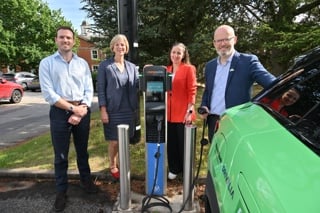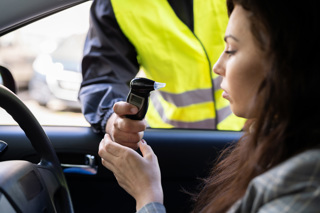An investigation into electric heavy goods vehicle (HGV) battery fires risks has identified measures that will lead to safer charging infrastructure site design and operation.
Commissioned by Connected Places Catapult, part of Innovate UK, the new study considers the likelihood and severity of fire risks.
The report – eHGV Battery Fire Risks – also identifies control measures that will minimise the risk of fire spreading from one electric HGV to another or to other site assets, avoiding the potential escalation of otherwise minor incidents.
“The call to action from this report is clear,” said Tom Marsh, systems engineer at Connected Places Catapult. “It is essential for eHGV (electric HGV) charging site developers to perform quantitative fire risk assessments so that knowledge of battery fires can be improved, and early eHGV charging infrastructure can deployed safely.”
Incidents of electric passenger car and bus fires have shown substantial thermal energy being almost impossible to extinguish, says the report from Syselek and Beat.
Having significantly larger batteries therefore suggests fire incidents involving electric HGVs could be more severe.
Expanded spacing between vehicles or infrastructure at electric HGV depots, parking stops, charging sites, and loading bays will be effective, it says.
However, sites with restricted space will need careful layout and further control measures, including physical fire barriers, isolation areas, emergency services’ access routes, and improved fire detection and control systems.
Risk of an EV catching fire
London Fire Brigade reported 1,389 fire accidents involving lithium-ion batteries between January 2017 and July 2024.
The majority (417) of those related to e-bikes, with electric cars accounting for 23% of incidents (321) and 20 lithium-ion fires involving trucks.
Research by the Swedish Civil Contingencies Agency, published in report in May 2023, revealed that internal combustion engine (ICE) vehicles were 20 times more likely to catch fire than EVs.
Sweden recorded 106 fires in various electrified modes of transport in 2022. More than half were in e-scooters (38) and e-bikes (20).
Out of Sweden’s 611,000 electric vehicles, 23 fires (0.004%) were reported. The fleet of 4.4 million petrol and diesel vehicles recorded 3,400 fires (0.08%).
Separate global research from EV FireSafe found that 0.0012% of electric passenger vehicles caught fire from 2010 to 2023.
While it was difficult to find similar global statistics for petrol and diesel vehicles, EV Firesafe used a range of country reports and found a much higher 0.1% risk of catching fire, more than 80 times the rate EV Firesafe found for EVs.
However, the numbers do not allude to the higher severity and greater damage caused by EV fires than diesel or petrol vehicle fires.
Overheating, overcharging, and manufacturing defects are believed to be leading causes of these fires, but since most artifacts are destroyed during the fires leaving little forensic evidence, the specific failure modes causing most li-ion battery fires are unknown.
The Dutch public safety institute (NIPV) estimate that the cause of 50% of battery fires are unknown. Its data also suggests that for those known causes, the most likely cause is collision, followed by arson, with charging event issues the least likely.
In many cases of EV fires, the battery itself was not the cause, nor even effected. The NIPV data also indicates that only around 20% of EV fires arise during charging or within one hour after charging.
As charging speeds increase, the report suggests that this percentage is expected to increase.
Furthermore, considering the congregation of EVs at charging sites, it says that the severity of an EV fire during charging is worse than elsewhere.
Increase fleet awareness of risk
The report urges further effort to raise awareness of eHGV battery-related fire risks in the freight transport sector and among those involved in eHGV fleet trials.
There are several potential causes of lithium ion (li-ion) battery fires. Thermal runaway events do not exhibit visible flames nor raised external temperature, making external detection difficult until thermal runaway has already far progressed and will develop with off gassing and a fire or explosion.
The potential for fire to spread from one electric HGV to other EVs at charging sites, depots and truck stops, represents a significant escalation, it says.
Such sites need to be designed and operated to prevent eHGV fires from starting and mitigate eHGV fires from spreading.
Segregation and compartmentalisation of the different areas (charging points, further power equipment, passive parking areas, and facilities), it explains, is an effective measure against fire spread, preventing the loss of an entire site due to a single eHGV fire or explosion.
On-site detection systems, such as thermal sensors connected to an automatic site alarm system, could also be complemented by CCTV with image processing (using AI to detect fire and smoke).
An eHGV’s onboard alarm, triggered by the Battery Management System (BMS), can isolate the battery before a battery fire develops.
If this onboard alarm were connected wirelessly to a site alarm system, it would provide early emergency warning, the report suggests.
This approach is already considered at electric passenger transit bus depots and merits consideration for use at eHGV charging sites, it conludes.
Connected Places Catapult will be running a lunchtime webinar on March 4 to discuss the report findings.























Login to comment
Comments
No comments have been made yet.